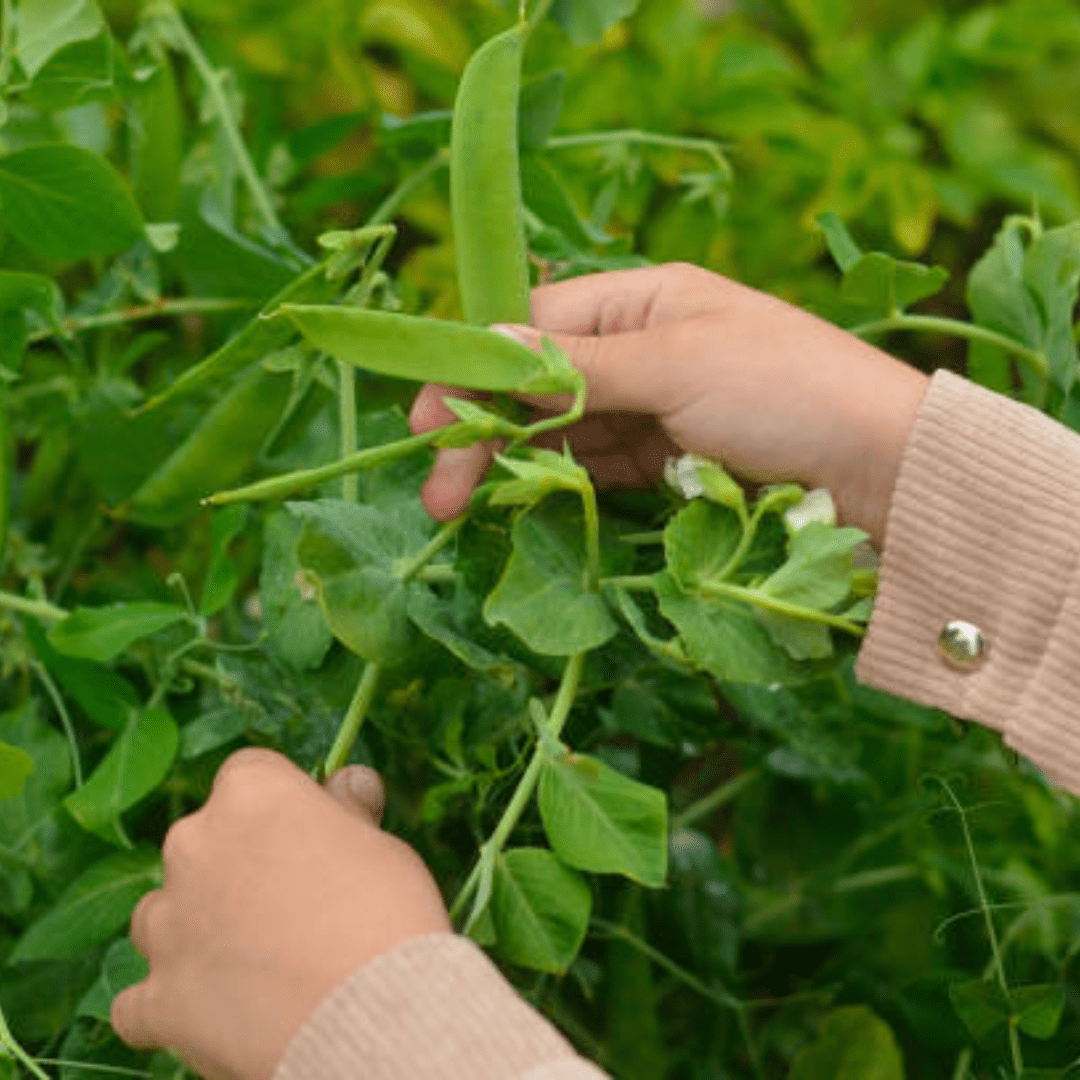Discover how to grow garden peas for a bumper crop with these easy, proven tips! Whether you’re planting shelling peas, snap peas, or snow peas, you’ll learn the best time to plant, how to prepare your soil, and simple trellising tricks to boost your harvest. From seed to plate, growing garden peas is a rewarding way to fill your pantry with fresh, sweet produce straight from your backyard.
Garden peas are not only a delicious addition to any meal, but also a joy to grow in your own backyard! With their vibrant green pods and sweet, tender peas, they are a staple in many home gardens. However, achieving a bumper crop of garden peas requires proper planning, care, and maintenance.
In this article, I will guide you through the essential steps to successfully grow garden peas and maximize your harvest. From selecting the right pea variety to harvesting and storing the peas, I will provide you with valuable insights and practical tips to ensure a bountiful supply of these delightful legumes. So, let’s dig in and discover how to grow garden peas for a bumper crop!
This is a pinnable post. Tap or hover over any image in this post to pin to your Pinterest Boards.
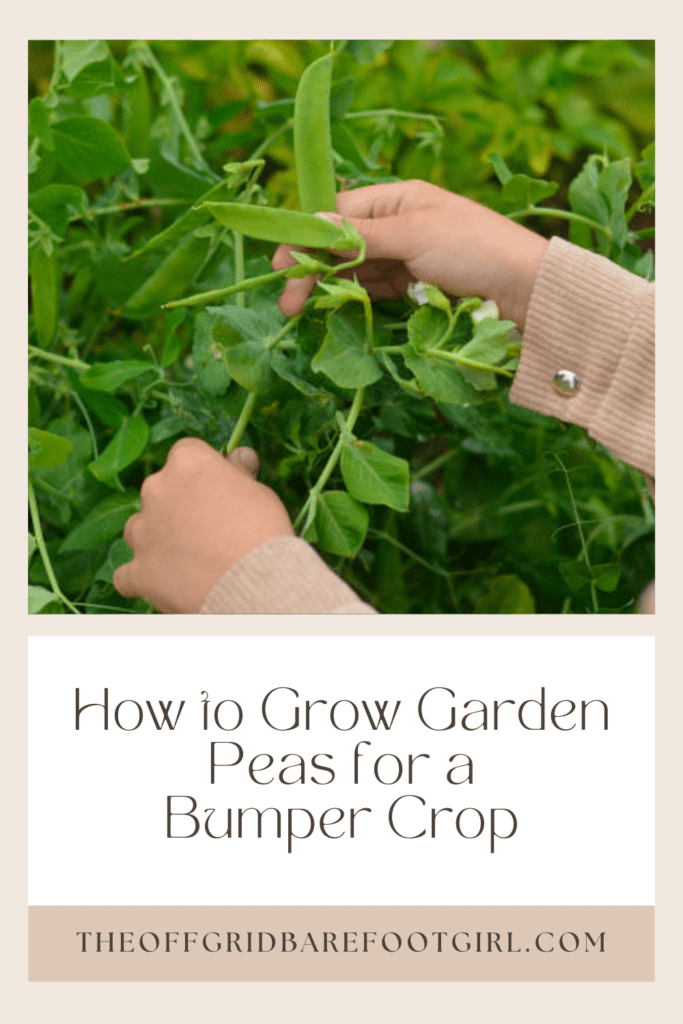
Selecting the Right Pea Variety for Your Garden
Considerations for Choosing the Right Pea Variety
When it comes to growing garden peas, there’s no one-size-fits-all variety. With so many options available, it’s important to consider a few factors before selecting the right pea variety for your garden. Are you looking for peas to eat fresh off the vine or for drying? Do you have limited space and need a compact variety? Are you dealing with a specific climate or growing condition? Are you excited about a new canning project? By taking these factors into account, you can ensure a successful and bountiful crop.
Recommended Pea Varieties for Different Climates
Peas are a cool-season crop, but different varieties have their own preferences when it comes to climate. If you live in a cooler region, you’ll have a wider selection of pea varieties to choose from. Some popular options include ‘Sugar Snap,’ ‘Green Arrow,’ and ‘Oregon Sugar Pod.’ These varieties thrive in lower temperatures and produce deliciously sweet peas. I like to grow cascadia peas in my spring garden. This variety does not need trellising or staking, as these are more of a bush variety.
If you’re in a warmer climate, don’t fret! There are still pea varieties that can withstand the heat. Look for heat-tolerant varieties like ‘Wando,’ ‘Alderman,’ or ‘Dwarf Grey Sugar.’ These varieties have been bred to handle higher temperatures without sacrificing taste or yield.
Remember, it’s always a good idea to check with your local gardening experts or nurseries for recommendations specific to your area.
Preparing the Soil for Pea Planting
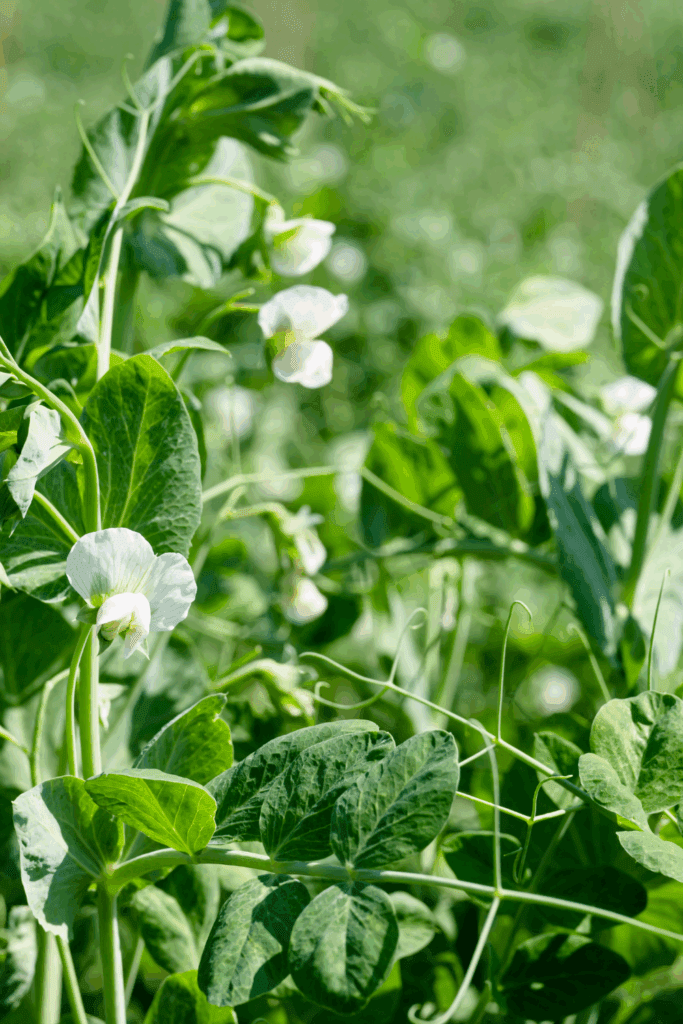
Assessing and Amending Soil Conditions
Before you start planting peas, it’s crucial to assess your soil conditions. Peas prefer well-draining soil with a slightly acidic to neutral pH level. If your soil tends to be heavy or clay-like, adding organic matter such as compost or well-rotted manure can help improve drainage and provide essential nutrients.
Perform a soil test to determine the pH level and make any necessary adjustments. Most pea varieties prefer a pH range of 6.0 to 7.5. If your soil is too acidic, adding lime can help raise the pH, while sulfur can lower it if it’s too alkaline.
You can also do some simple DIY soil tests yourself with simple items and ingredients you may already have on hand. I wrote an informative post for you, so go check it out!
4 Easy DIY Garden Soil Tests to Do Now
Preparing the Soil Bed for Pea Planting
Once you’ve assessed and amended the soil as needed, it’s time to prepare the soil bed for planting. Clear any weeds or debris from the area, ensuring there’s no competition for nutrients. Use a garden fork or tiller to loosen the soil to a depth of at least 8 inches, creating a loose and crumbly texture.
Avoid working the soil when it’s excessively wet, as this can lead to compaction. Wait until the soil has dried out enough to crumble in your hand without forming a muddy ball. This will create the ideal planting conditions for your peas.
Planting Pea Seeds in the Garden
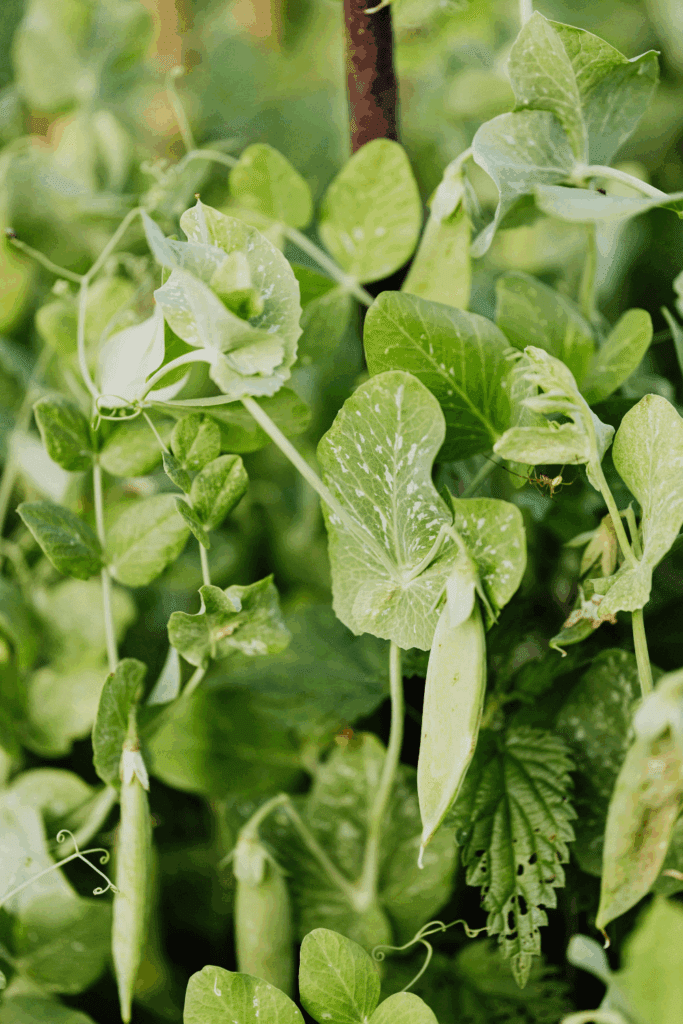
When to Plant Pea Seeds
Timing is crucial when it comes to planting pea seeds. Peas thrive in cool weather and should be planted as early as the soil can be worked in the spring. They can even tolerate a light frost. Aim to plant your seeds 4 to 6 weeks before the last expected frost date in your area.
Preparing and Sowing Pea Seeds
Before sowing the seeds, give them a little head start by soaking them in water overnight. This will help soften the seed coat and promote faster germination.
Create small trenches in the prepared soil, about 1 to 2 inches deep and 2 to 3 feet apart. Space the seeds about 2 inches apart along the trench, then cover them with soil. Gently pat the soil down to ensure good seed-to-soil contact.
Spacing and Depth Guidelines for Pea Planting
When planting peas, proper spacing is essential for healthy growth and optimal yields. Bush varieties typically require 2 to 4 inches between plants, while vining varieties need 6 to 8 inches. Additionally, leave about 18 inches of space between rows to provide enough room for the plants to spread out.
As for planting depth, aim for about 1 to 2 inches. Planting too shallow may result in poor root development, while planting too deep can delay germination or lead to seed rot. Find that happy medium for a successful pea crop.
Providing Proper Care and Maintenance for Pea Plants
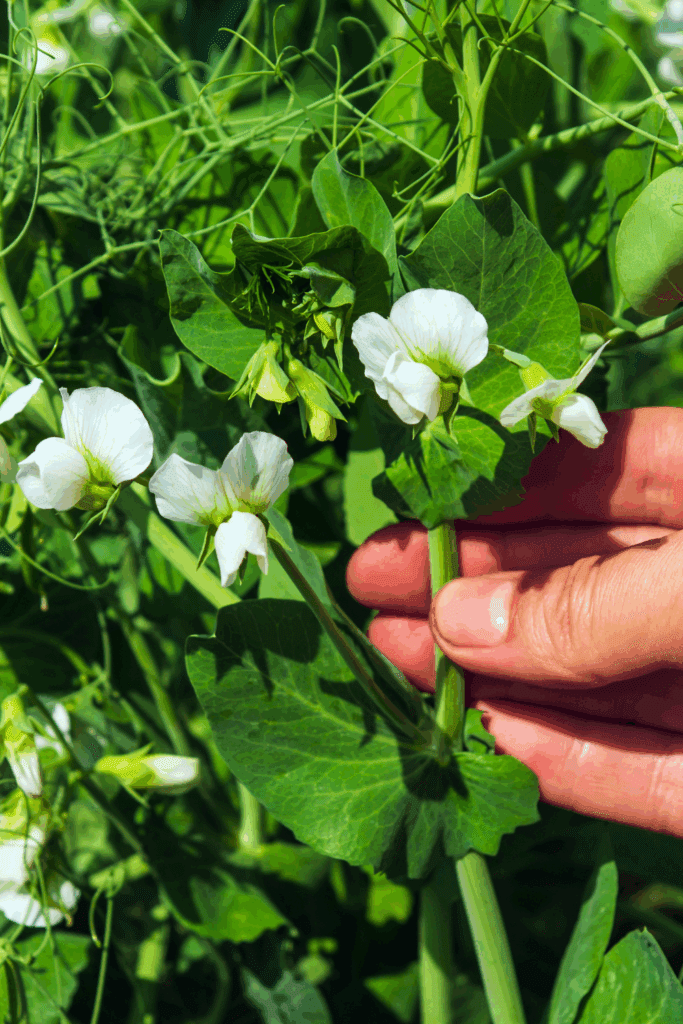
Watering and Irrigation Techniques for Pea Plants
Peas love consistent moisture, so keep the soil evenly moist throughout the growing season. Water deeply whenever the top inch of soil feels dry, but avoid overwatering, which can lead to root rot. A good rule of thumb is to aim for about 1 inch of water per week, either from rainfall or irrigation.
Fertilizing Pea Plants for Optimal Growth
Peas are generally not heavy feeders, but a balanced fertilizer can give them a nutrient boost. Before planting, incorporate a slow-release fertilizer into the soil according to the package instructions. This will provide a steady supply of nutrients as the plants grow. Alternatively, you can side-dress the plants with compost or a nitrogen-rich fertilizer about 4 to 6 weeks after planting.
Supporting and Training Pea Plants
Certain varieties of peas, such as vining types, require support to prevent them from toppling over. Using trellises, stakes, or a pea-specific support structure, gently guide the plants as they grow, ensuring they have something to cling to. This will keep the plants upright and make harvesting easier.
Managing Weeds in the Pea Garden
Weeds can compete with pea plants for nutrients and water, so managing them is essential. Regularly inspect the garden and promptly remove any weeds that emerge. Applying a layer of mulch around the plants can help suppress weeds and conserve soil moisture. Just be careful not to cover the pea seedlings themselves, as they need access to sunlight for healthy growth.
Managing Pests and Diseases in Your Pea Garden
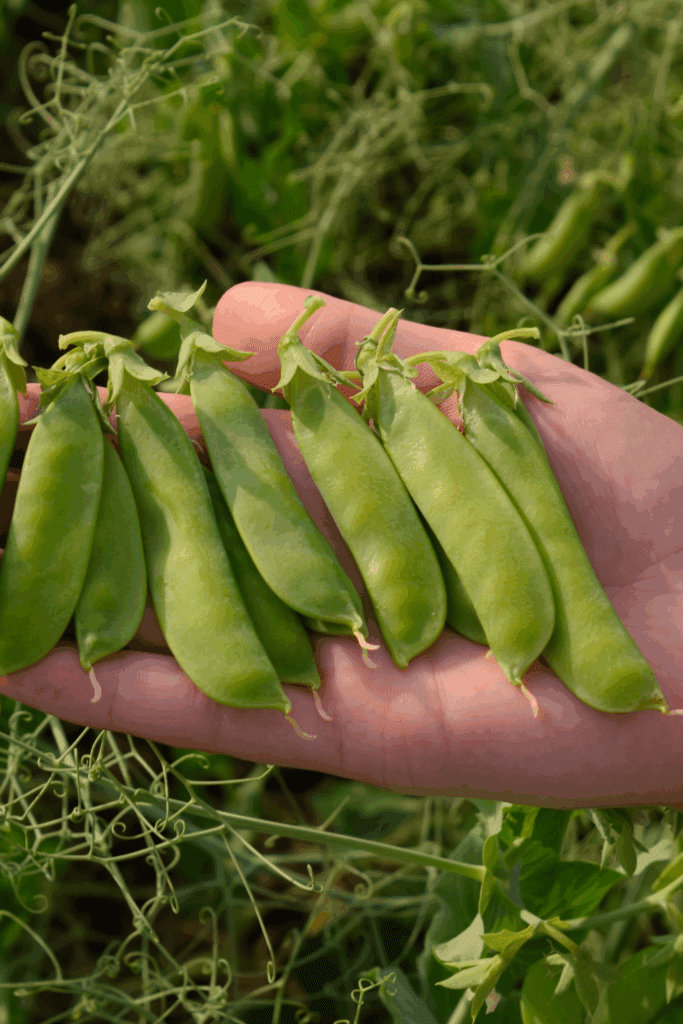
Common Pests Affecting Pea Plants
Pesky pests can wreak havoc on your beloved pea plants, so it’s important to stay ahead of them. Some common culprits that can munch on your peas include aphids, slugs, and pea weevils. These little critters may be small, but they can cause big damage if left unchecked.
Identifying and Treating Pea Plant Diseases
Just like humans, plants can get sick, too. Pea plants are no exception, and they can fall victim to diseases such as powdery mildew, root rot, and pea enation mosaic virus. If you notice any unusual discoloration, wilting, or stunted growth in your pea plants, it’s important to diagnose and treat the issue promptly. Consult with your local gardening expert or do some research to find the best solutions for specific pea plant diseases.
How to Grow Organically and Treat Pests and Diseases Naturally
There are a number of ways you can combat pests and diseases in your garden organically and naturally. I have written several posts to help you grow a thriving organic garden.
- How to Grow Marigolds As Pest Control In Your Vegetable Garden
- How to Effectively Combat Powdery Mildew in Your Garden
- The Best Tips for Organic Gardening
- How to Release Ladybugs In Your Garden for Organic Pest Control
- The Best Garden Snail Control Strategies
Harvesting and Storing Garden Peas
Signs of Pea Readiness for Harvest
The moment of truth has arrived – your peas are finally ready to be harvested! But how do you know when it’s the perfect time to pluck those plump pods? Look for a vibrant green color, a firm texture, and a slight bulge in the pod. Peas that have reached their peak will also be easy to shell and should give a satisfying snap when broken.
Proper Harvesting Techniques for Garden Peas
You’ve spotted those perfectly ripened pea pods, now it’s time to bring them in! Gently hold the stem of the pea pod with one hand and use your other hand to pluck the pod off the vine. It’s important to avoid yanking or pulling, as this can damage the plant.
Storing and Preserving Peas for Extended Use
Congratulations, you’ve harvested an abundance of peas! Now, how can you make them last longer? Store your peas in a cool and dry place, such as the refrigerator, to maintain their freshness. If you want to preserve them for an even longer period, blanch them quickly in boiling water, then cool them down in ice water before freezing them. This will help them retain their flavor and texture for months to come. You can even can them to place on your pantry shelf!
Tips for Maximizing Pea Yield and Quality
Practices to Enhance Pea Yield
Want a bumper crop of peas? Give them the love and attention they deserve! Provide your pea plants with plenty of sunlight, regular watering, and nutrient-rich soil. Consider using natural fertilizers or compost to give them an extra boost. And don’t forget to give them some support, like a trellis, to climb on. Happy peas make for a plentiful harvest!
Ensuring High-Quality Peas through Proper Care
To ensure the highest quality peas, it’s crucial to take good care of your plants. Regularly monitor their growth and address any issues promptly. Remove any weeds that may compete with your peas for nutrients and water. Additionally, keep an eye out for signs of stress or disease, and take appropriate action before they have a chance to spread. Remember, healthy plants equal tasty and abundant peas!
Conclusion
In conclusion, growing garden peas for a bumper crop is an achievable goal with the right knowledge and techniques. By selecting the appropriate pea variety, preparing the soil, providing proper care, and managing pests and diseases, you can enjoy a plentiful harvest of fresh and flavorful peas. Remember to harvest at the right time and store them properly to extend their shelf life. With these tips and tricks, you’ll be well on your way to enjoying a successful and rewarding pea-growing season. Happy gardening and may your garden be filled with an abundance of delicious garden peas!
Resources: Here are some helpful resources for further information.
- Growing Peas Indoors: From Seed to Harvest In Your Home – By Empress of Dirt
- How to Grow Peas from Seed – By The House & Homestead
- How to Grow Peas – By Edible Backyard
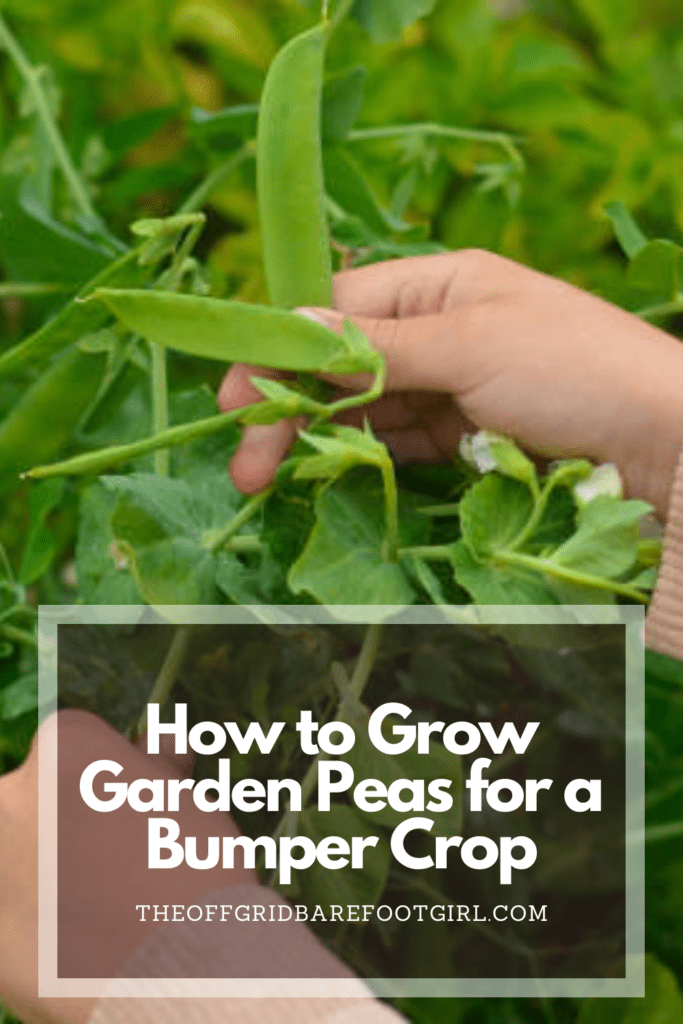
Frequently Asked Questions
1. When is the best time to plant garden peas?
The ideal time to plant garden peas depends on your location and climate. In general, peas prefer cool weather and can tolerate frost. It is recommended to plant them in early spring, as soon as the soil can be worked. However, in warmer regions, peas can also be planted in the fall for a winter crop. Consult your local gardening resources or extension office for specific planting recommendations for your area.
2. How do I prevent pests from damaging my pea plants?
To protect your pea plants from common pests such as aphids, pea weevils, or pea moths, it’s important to practice good garden hygiene. Clear away any debris or weeds that may harbor pests. Additionally, you can use organic pest control methods like introducing beneficial insects, such as ladybugs or lacewings, or using organic sprays like neem oil. Regularly inspect your plants for signs of infestation and take prompt action when necessary.
3. Can I save pea seeds for future planting?
Yes, you can save and store pea seeds for future planting. To do so, allow the pea pods to fully mature and dry on the vine. Once dry, carefully remove the peas from the pods and store them in a cool, dry place, such as an airtight container or envelope. Label the container with the variety and date of collection. Stored properly, pea seeds can remain viable for several years.
4. Are garden peas suitable for container gardening?
Yes, garden peas can be grown successfully in containers or pots. Choose a container with a depth of at least 12 inches to accommodate the pea roots. Use a well-draining potting mix and provide support for the plants to climb, such as a trellis or stakes. Ensure the container receives at least 6-8 hours of sunlight daily and water regularly to keep the soil moist. Container-grown peas may require more frequent watering compared to those in the ground.
Summary
I hope I have inspired you to grow peas with these tips and products.
If you were encouraged by this post, I invite you to check out my FREE Printables Page for fun free printables, planners, and charts.
ENTER MY FREE Printables Page HERE
Here are some more of my gardening inspiration posts to check out!
How to Grow Carrots for a Bountiful Harvest
Prep Your Garden for Spring Planting with These Expert Tips!
How to Grow a Prepper Garden to Survive and Thrive
The Best Garden Tools You Need for a Productive Season
Fastest Growing Vegetables for Your Survival Garden
How to Grow Marigolds As Pest Control In Your Vegetable Garden
Must-Have Tools for a Successful Balcony Vegetable Garden
How to Effectively Combat Powdery Mildew in Your Garden
The Best Tips for Organic Gardening
How to Release Ladybugs In Your Garden for Organic Pest Control
The Best Garden Snail Control Strategies
The Best Spring Vegetables to Grow in Your Garden
Seed Starter Mix: How To Make Your Organic Seed Starter Mix At Home
How to Grow a Productive Canning Garden
How to Plant and Grow a Salsa Garden
Easiest Heirloom Vegetable Seeds to Grow Now
How to Use the Hand Twist Claw Tiller: Tackling Tough Soil
Planning Your Garden: How to Plan a Vegetable Garden: Expert Green Thumb Tips!
Winterizing the Garden: How to Winterize Your Vegetable Garden: Step-by-Step Checklist
Mulching the Garden: How to Make Leaf Litter Mulch
Grow a Pumpkin Patch: How to Grow a Pumpkin Patch in Your Backyard
How to Grow a Fall Garden: 9 Best Fall Crops
Clever Ways to Incorporate Indoor Composting into Your Home
How to Start Composting for the Garden: A Step-by-Step Guide
The Ultimate Guide to Composting in Your Suburban Backyard
Why I Built A Survival Garden in My Backyard
16 Best Medicinal Herbs to Grow in Your Garden Now
Blessings,
The Off Grid Barefoot Girl

